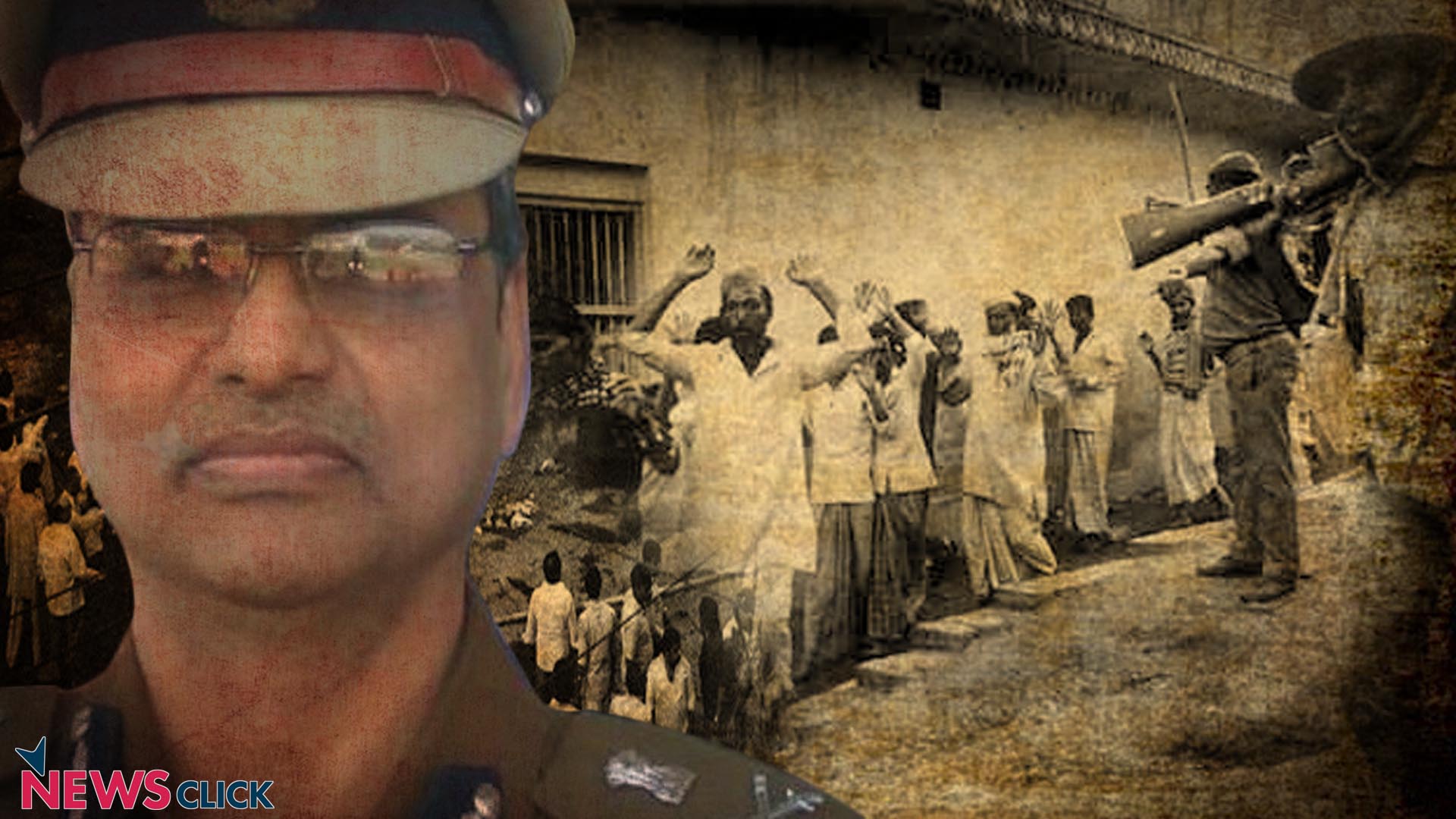His communal bias was fully demonstrated during the riots, an inquiry commission’s report had said.
The appointment of IPS officer KS Dwivedi, from the 1984 batch, as Bihar’s new director general of police (DGP) has been surrounded by controversy. The opposition, Rashtriya Janata Dal (RJD), has alleged that the appointment has been made at the instance of the Rashtriya Swayamsevak Sangh (RSS) – the ideological mentor of the Bharatiya Janata Party (BJP).
“Dwivedi was the superintendent of police (SP) of Bhagalpur in 1989 when the city witnessed an infamous communal violence in which around 1,000 people (the majority of them being Muslims) were killed. His (Dwivedi’s) handling of the situation had come under a lot of criticism,” RJD national spokesman Manoj Jha told Newsclick.
“The decision has clearly been taken by Nagpur (the RSS headquarters) and been imposed on Patna. Chief Minister Nitish Kumar has chosen Dwivedi at the instance of his political ally (the BJP),” he added.
Kumar’s party – the Janata Dal (United) – had walked out of the Grand Alliance comprising the JD(U), the RJD and the Congress in July last year after corruption charges were leveled against the then Deputy Chief Minister and RJD leader Tejaswi Yadav. He, later on, formed a new government with his old ally – the BJP.
Dwivedi, who was Director General (Training), took over from PK Thakur, who retired from service on February 28, 2018.
Dwivedi had survived the wrath of the then Prime Minister Rajiv Gandhi, who had visited Bhagalpur on October 26, 1989, and had told the then Chief Minister Satyendra Narayan Sinha to transfer the senior cop immediately.
A commission of inquiry had later indicted Dwivedi for the partisan role of the police. “His (Dwivedi’s) communal bias was fully demonstrated, not (only) by the manner of arresting the Muslims but also by not extending adequate help to protect them,” the inquiry commission report had said. But the then SP was given a clean chit in the due course.
Bhagalpur riots
The Vishwa Hindu Parishad (VHP) had organised a ‘Ramshila’ procession in Bhagalpur in 1989 as part of the Ram Janmabhoomi campaign, which aimed to construct a Ram temple at Ayodhya in Uttar Pradesh in place of the Babri Masjid. The procession aimed to collect shilas (bricks) for the proposed Ram temple. One such procession passing through Fatehpur village of the town provoked brick batting and arson on October 22. Prior to the outbreak of the riots, two false rumours about the killing of Hindu students started circulating: one rumour stated that nearly 200 Hindu university students had been killed by the Muslims, while another rumour stated that 31 Hindu boys had been murdered with their bodies dumped in a well at the Sanskrit College.
On October 24, 1989, the ‘Ramshila’ processions from the various parts of the district were to proceed to the Gaushala area, from where they would move on to Ayodhya. The procession coming from Parbatti area passed peacefully through Tatarpur, a Muslim-concentrated area, after its leader Mahadev Prasad Singh told Hindus not to raise any provocative slogans.
Sometime later, another procession from Nathnagar arrived at Tatarpur. This massive procession was escorted for safety by the police, in the presence of SP Dwivedi. Some members of the procession shouted slogans such as ‘Hindi, Hindu, Hindustan, Mullon Bhago Pakistan (India is for Hindus, Muslims go to Pakistan) and Babur Ki Auladon, Bhago Pakistan Ya Qabristan (Children of Babur, go to Pakistan or graveyard).
The then District Magistrate (DM) Arun Jha had stopped the procession at the Parbatti-Tatarpur junction and requested the Muslims to allow the procession to pass through Tatarpur. But the Muslims refused and suggested that the procession take an alternative route to Gaushala.
As the discussions were going on, crude bombs were thrown at the procession from the premises of the Muslim High school nearby. Although no one was killed in the bombing, 11 policemen suffered minor injuries. This is considered as the event which had triggered the riots.
A curfew was imposed by the state government immediately in the afternoon of October 24 and all the civilian assemblies were declared illegal. Meanwhile, the Hindu procession retreated from the Parbatti-Tatarpur junction and turned into a mob. The mob attacked shops owned by the Muslims on the Nathnagar road (later renamed to Lord Mahavir Path). The Hindu rioters also attempted to storm the Muslim-majority locality of Assanandpur, but they failed as a result of retaliation by Muslims. The mob then turned to the Hindu-dominated locality Parbatti, where it massacred at least 40 Muslims. As the news of the violence reached the other Ramshila processions at Gaushala, the Hindus went on a rampage, killing Muslims, looting their shops and destroying their property.
On October 25, an 8,000-strong mob looted and destroyed Madaninagar, a Muslim settlement, turning it into a ghost town. They also attacked Kanjhiagram, a nearby locality. Bhatoria, a Muslim-majority village was attacked on October 25 and again on October 27, killing several Muslims. In Hasnabad, the Shahi Masjid built during the Aurangzeb’s reign was damaged.
The alleged police atrocities further fueled the violence. Upon immediate request from the state government, Army was called in on October 26.
According to official figures, 1,070 people were killed and 524 were injured. Fifteen out of 21 blocks of Bhagalpur were affected by the riots. At least 11,500 houses in 195 villages were destroyed, displacing 48,000 people. 600 power looms and 1,700 handlooms were turned into ashes. A total of 68 mosques and 20 mazars (tombs) were destroyed.
Soon after coming to power in November 2005, Chief Minister Nitish Kumar had set up the Bhagalpur Riots Probe Commission under Justice NN Singh to probe the riots. The Commission submitted its 1000-page report in February 2015; the report was presented in the Bihar Legislative Assembly on August 7, 2015. It held the inaction by the then Congress government, the local administration and the police responsible for the deadly clashes.
Courtesy: Newsclick.in

